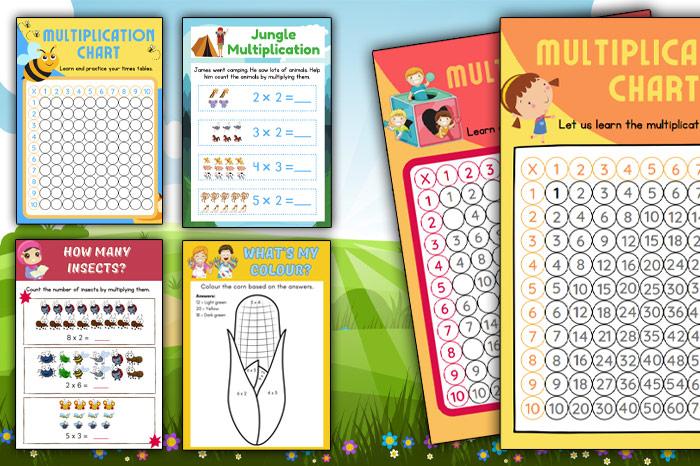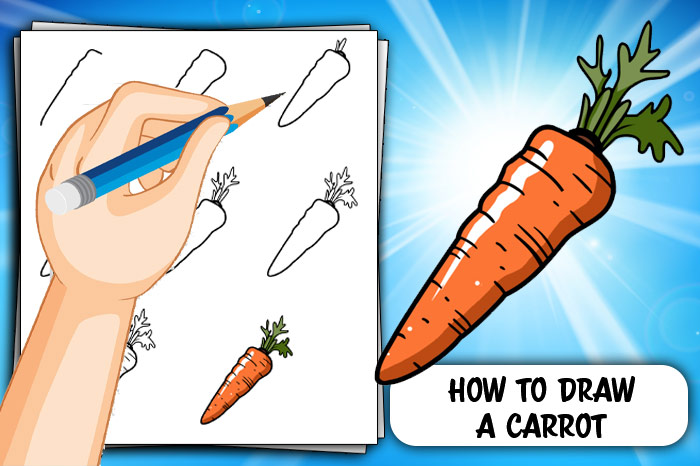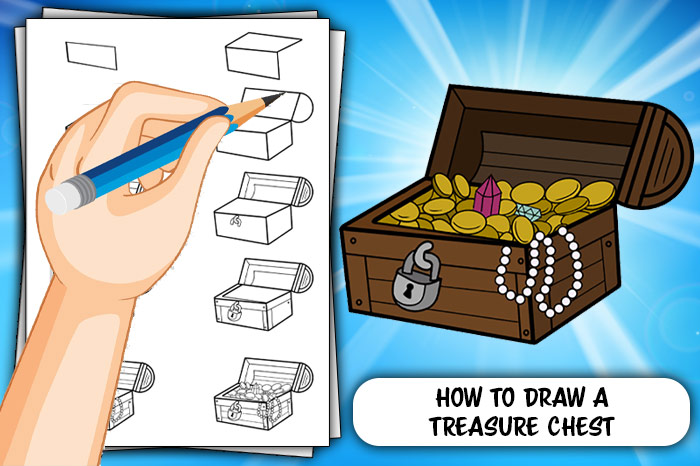The times tables are an essential building block in a child’s mathematical understanding. They will build on this knowledge in their future learning, so a good understanding is essential for their success. Multiplication can be practiced in a child’s everyday life by laying the table at mealtimes, adjusting baking recipes and working out how to spend their pocket money. Our multiplication worksheets and multiplication chart will help your child to learn in a fun and engaging way.
When children learn multiplication it is about pattern identification, memorisation and repetition. Identifying patterns is something that children love and can be a great basis for play. It is also key in the future study of maths, as patterns underpin so many aspects. Being able to spot patterns, quickly, makes it easier for children to solve maths problems and complete mental arithmetic. Recalling the times tables also improves a child’s memory skills, essential across all of their learning. Finally, mastering the times tables relies on repetition, this builds confidence and gives a child a real feeling of achievement.
We know that the key to learning the multiplication tables is practice, practice, practice. Our worksheets are here to help children do just that. They are downloadable and printable too so they can have a hands-on experience, away from screens, and practice pencil control!
Details of the Multiplication Chart and Multiplication Activities Worksheets
Our book is bright and attractive, with cute cartoons and fun examples. It includes a useful multiplication chart and 9 pages of engaging practice activities. We will progress from recall to application and from visual representation to numerical. The key stages in supporting a child to learn and feel confident in multiplication.
Page 1: Multiplication Chart
Our multiplication chart is the basis of understanding the times tables. Children need to see the whole thing so that they can start to understand the patterns formed. Can they spot any of these patterns? How about shading reoccurring numbers, such as numbers ending in 5 or 10 in the 5x column? How are the 2x and 4x columns related to each other? When your child has moved on to the activities, they can come back to this chart for support or to check their answers.

Pages 2 and 3: Learn and Practice Your Times Tables
The first activity in the book ask your child to start to recall the multiplication chart that they have just studied. First, they are asked to complete the gaps in the chart using their pattern identification skills. This is perfect as a Look, Cover, Write, Check activity, referring back to page 1 to check answers. On page 3, they are given a blank chart to complete. They can start with the columns and rows that they feel confident with and then try to fill in the gaps based on the patterns that are starting to form. Again they have page 1 to help them. This recall and repetition is key to building confidence and speed with times tables and there is plenty of number writing practice too.

Page 4: Jungle Multiplication
Page 4 moves on from recall and gets your child to apply what they have learned. James has seen lots of animals on his camping trip and would like to use multiplication to work out how many there were. The adorable animals boost engagement and visual representation is a key step in a child’s understanding of multiplication. Your child can check their answers by counting the animals, building their counting speed and accuracy too. Make sure to point out how time-saving multiplication can be when you get up to as many as 10 animals.

Page 5: How Many Insects?
The fun continues and moves on to cute, creepy crawlies. Now we have lots more creatures, it would take too long to count them all, so let’s multiply! Your child is now asked to multiply larger numbers, increasing the challenge and sense of achievement. They can go back to page 1 anytime they need support. Repetition and building familiarity with the multiplication chart is key.
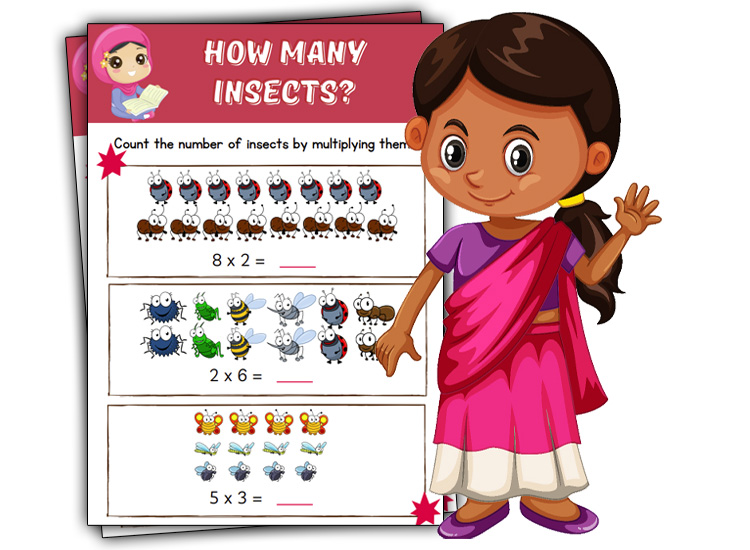
Page 6: Under the Sea Multiplication
After visual representation, the next step is applying multiplication skills to problems that are represented by numbers. Your child needs to work out the answers and write them into the bubbles. A wider range of numbers is being used here to develop their confidence further. It may be helpful to use ‘manipulatives’ at this point. These are any small objects that a child can group or move around to help them solve the problems. They can be anything small, found around the house such as; small toys, pieces of pasta, coins etc.

Page 7: Mental Multiplication
It’s time to move on to solving equations using only their minds. Children need to practice working out simple multiplication in their heads. This is key to speeding up their arithmetic and applying their multiplication skills to future maths problems.
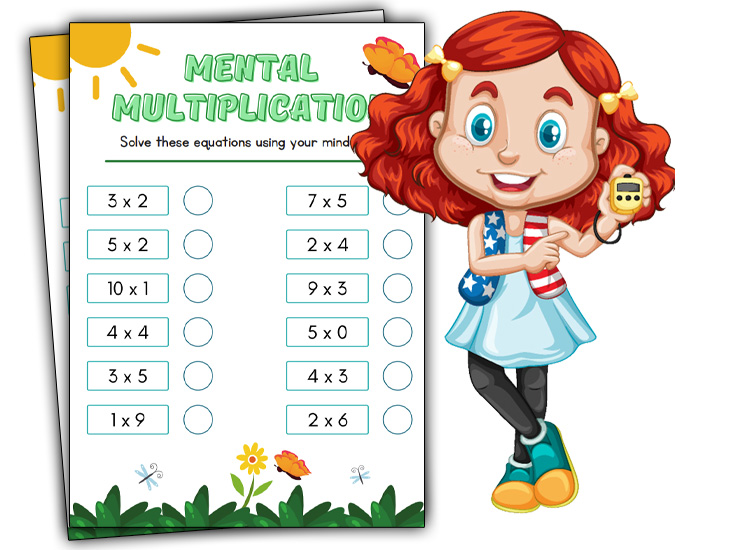
Page 8: Multiply with 1 and 10
Now we introduce your child to some new rules of multiplication. Multiplying by 1 and 0. Anything multiplied by 1 stays the same and anything multiplied by 0 becomes 0. They will get a boost of confidence by learning and applying these new rules.
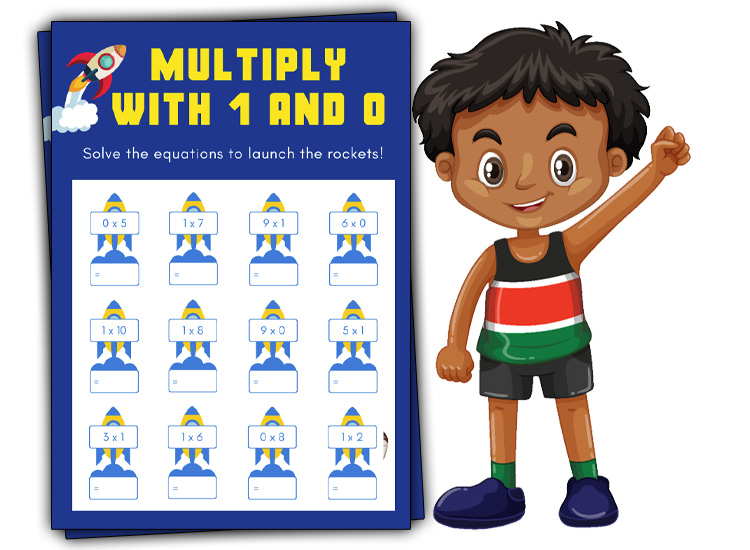
Pages 9 and 10: What’s My Colour? and Colour by Number
Finally, your child can apply everything they have learned and get to do some fun colouring. They must complete the multiplication to work out which colour to use for each part of the pictures. They can then display their pictures to show off their impressive multiplication knowledge and fabulous colouring skills.

Did You Love our Multiplication Activities and Multiplication Chart?
If you like the look of the activities and feel that they would be a fun way to support your child in learning their times tables. Download our ‘Multiplication Worksheets’ now. Or, if you feel that your child could benefit from more of our resources try our ‘Free Printable Addition Chart’. An excellent resource to develop addition and mental arithmetic skills.

